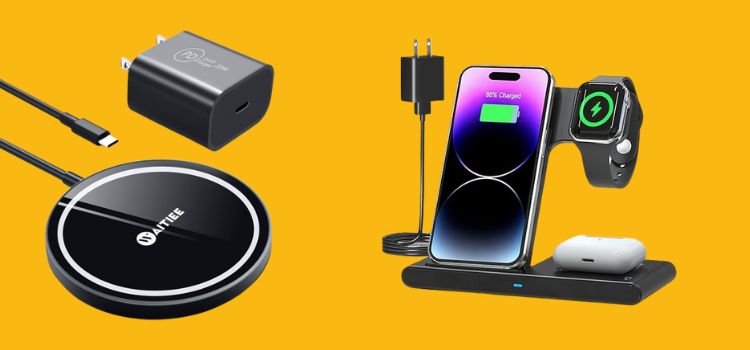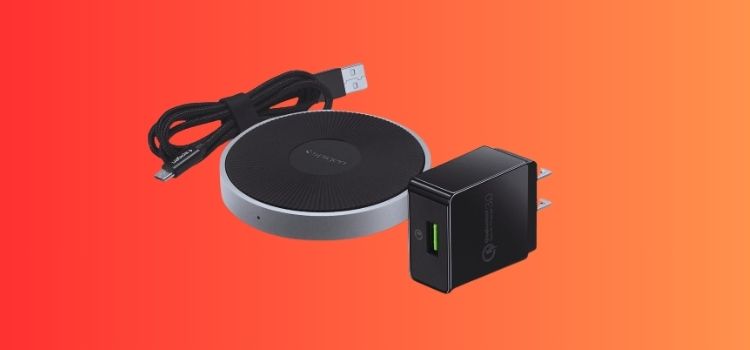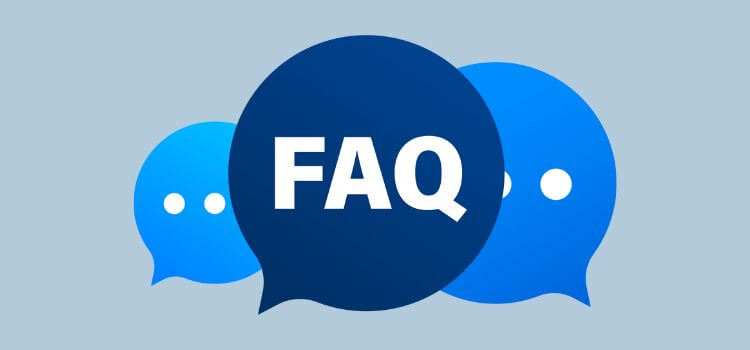As an Amazon Associate, I earn from qualifying purchases.
A common problem is that a phone can’t charge on a wireless charger. Disposing of wires and plugs to power smartphones has made wireless charging a convenient and widely used option. However, there are various reasons why a phone may not charge properly on a wireless charger. This guide will explore these reasons, provide solutions, and offer general information about wireless charging technology.
Introduction to Wireless Charging
Through electromagnetic induction, electromagnetic fields are used in wireless charging to transmit energy between two items. It involves a charging pad and a compatible device, such as a smartphone. The technology behind wireless charging is known as inductive charging. Here’s a basic outline of how it works:
- Transmitter Coil: When an electric current flows through the transmitter coil in the charging pad, it produces an oscillating magnetic field.
- Receiver Coil: To charge the battery, the smartphone’s receiver coil absorbs the magnetic field and transforms it into electric current.
Common Issues with Wireless Charging

1. Incompatible Devices
Not every wireless charger works with every device. Some phones do not support wireless charging at all, while others may require specific types of chargers.
Solution: Verify that your phone supports wireless charging and that your charger is compatible with your phone model. The Qi standard is the most widely used, but some older or specialised devices may use different standards.
2. Misalignment
For wireless charging to work, the transmitter and receiver coils must be properly aligned. If they are not, the magnetic field cannot transfer energy efficiently.
Solution: Adjust the position of your phone on the charging pad. Some chargers have alignment guides or magnets to help with this.
3. Obstructions
Cases, covers, or foreign objects between the phone and the charger can interfere with charging.
Solution: Remove any thick or metallic cases and ensure no objects, such as coins or cards, between the phone and the charger.
4. Charger or Phone Issues
The problem could be with the charger or the phone’s internal components.
Solution: Test the charger with another compatible device to see if it works. If the charger functions correctly, the issue may lie with your phone. In this case, consult a technician.
Detailed Troubleshooting Steps

Step 1: Check Compatibility
- Phone Specifications: Check the manufacturer’s website or the phone manual to confirm that your phone model supports wireless charging.
- Charger Specifications: Ensure that the charger is designed for your phone. The Qi standard is common but double-check for any specific requirements.
Step 2: Ensure Proper Alignment
- Positioning: Place the phone in the centre of the charging pad. Some chargers have visual or tactile guides to help with alignment.
- Adjustments: If charging doesn’t start, try moving the phone slightly to find the optimal position.
Step 3: Remove Obstructions
- Cases and Covers: Remove any thick or metal cases. Wireless charging works best with thin or wireless charging-compatible cases.
- Foreign Objects: Ensure no objects are between the phone and charger. Metal objects can block the magnetic field and even cause damage.
Step 4: Test the Charger
- Alternative Devices: Test the charger with another wireless charging-compatible device. If it functions, your phone is probably the problem.
- Power Source: Ensure the charger is plugged into a working power outlet and the cable and adapter are in good condition.
Step 5: Check for Software Issues
- Updates: Ensure your phone’s software is up to date. Manufacturers often release updates to improve charging performance.
- Restart: Try restarting your phone. Software bugs that interfere with charging can sometimes be fixed with a simple reboot.
Step 6: Examine Hardware Issues
- Charger Inspection: Look for visible damage on the charger, such as frayed cables or cracks in the charging pad.
- Phone Inspection: Check your phone’s back for any damage that might affect the receiver coil. If there’s physical damage, seek professional repair.
Understanding Wireless Charging Standards
The Wireless Power Consortium (WPC) created the Qi standard, the most extensively used wireless charging standard. It guarantees interoperability with several devices and chargers. Here are some key points about Qi charging:
- Universal Compatibility: Qi chargers can power any Qi-compatible device, regardless of brand.
- Safety Features: Qi chargers include safety mechanisms to prevent overheating, overcharging, and short-circuiting.
- Power Levels: Qi chargers come in different levels, typically ranging from 5W to 15W. Higher power levels charge devices faster but require compatible phones and chargers.
Advanced Wireless Charging Technologies
While Qi is the most common, other wireless charging technologies are emerging:
- Magnetic Resonance Charging: This technology allows for greater flexibility in positioning and can charge multiple devices simultaneously. However, it is less common and more expensive.
- Radio Frequency (RF) Charging: RF charging can charge devices at a distance, but it is still in the early stages of development and not widely available.
- Ultrasonic Charging: Uses sound waves to transfer energy. This technology is experimental and not yet available for consumer use.
Benefits of Wireless Charging
Comparing wireless charging to conventional wired charging has the following benefits:
- Convenience: Place your device on the charging pad without dealing with cables.
- Reduced Wear and Tear: Eliminates the need for repeated plugging and unplugging, reducing wear on charging ports.
- Safer Connections: Reduces the risk of electrical faults and short circuits from damaged cables.
Potential Drawbacks of Wireless Charging
Despite its benefits, wireless charging has some limitations:
- Slower Charging Speeds: Wireless charging is generally slower than wired charging, especially with lower-power chargers.
- Heat Generation: Wireless charging can generate more heat than wired charging, potentially affecting battery life.
- Limited Mobility: The phone must remain on the charging pad, limiting its usability during charging.
Future of Wireless Charging
With continuous research and development targeted at enhancing ease and efficiency, wireless charging appears to have a bright future:
- Increased Power Levels: Future chargers will offer higher power levels, reducing charging times.
- Greater Range: Technologies like RF and ultrasonic charging aim to increase the distance over which devices can be charged.
- Integration with Furniture and Surfaces: Wireless charging pads are integrated into furniture, cars, and other surfaces for seamless charging experiences.
Final Thoughts for Phone Charge on a Wireless Charger
Wireless charging is a convenient and evolving technology that offers a cable-free way to power your devices. However, several factors can affect its effectiveness, from compatibility and alignment issues to obstructions and hardware problems. By being aware of these variables and referring to the troubleshooting procedures described in this guide, you can guarantee a seamless and practical wireless charging experience.
Whether you are a new wireless charging user or an experienced one facing occasional issues, this comprehensive overview should help you identify and resolve common problems, enabling you to fully enjoy the benefits of this modern charging method. As technology develops, wireless charging will become much more practical and ingrained in our daily lives, becoming a function that is increasingly necessary for our gadgets.
Frequently Asked Questions about Wireless Charging

Why is my phone not charging on the wireless charger?
There are several reasons why your phone may not charge on a wireless charger:
- Incompatible Devices: Ensure your phone supports wireless charging and is compatible with your charger.
- Misalignment: The transmitter and receiver coils must be properly aligned. Adjust your phone’s position on the charging pad.
- Obstructions: Remove any thick or metallic phone cases and ensure no objects are between the phone and the charger.
- Charger or Phone Issues: Test the charger with another compatible device to see if it’s working. If it does, the issue may be with your phone.
Does every phone case support wireless charging?
Not all phone cases are suitable for wireless charging. Cases thick or made of metal may interfere with the magnetic field needed for charging. It’s best to use cases designed for wireless charging, typically labelled as “wireless charging compatible” or made of thin materials. If in doubt, try removing the case to see if the phone charges without it.
Is wireless charging slower than wired charging?
Wireless charging takes longer than conventional charging, particularly when utilizing lower-power chargers. The charging speed depends on the wireless charger’s power output and the phone’s capabilities. High-power wireless chargers (15W or more) can charge phones faster, but wired charging typically offers quicker charging times.
Can wireless charging damage my phone or battery?
Wireless charging is designed to be safe and includes mechanisms to prevent overheating, overcharging, and short-circuiting. However, it can generate more heat than wired charging, potentially affecting battery life over long periods. To mitigate this, use high-quality chargers and avoid charging your phone on a wireless charger for extended periods.
What should I do if my wireless charger is not working?
If your wireless charger is not working, follow these steps:
- Check Compatibility: Ensure your phone and charger are compatible.
- Ensure Proper Alignment: Adjust your phone’s position on the charger.
- Remove Obstructions: Remove thick or metallic cases and ensure no objects are between the phone and charger.
- Test the Charger: Try using another compatible device to see if it works.
- Inspect for Damage: Check the charger and your phone for visible damage.
- Update Software: Ensure your phone’s software is current, as updates can improve charging performance.
- Restart Devices: Sometimes, a simple phone restart can resolve charging issues.
Amazon and the Amazon logo are trademarks of Amazon.com, Inc, or its affiliates.